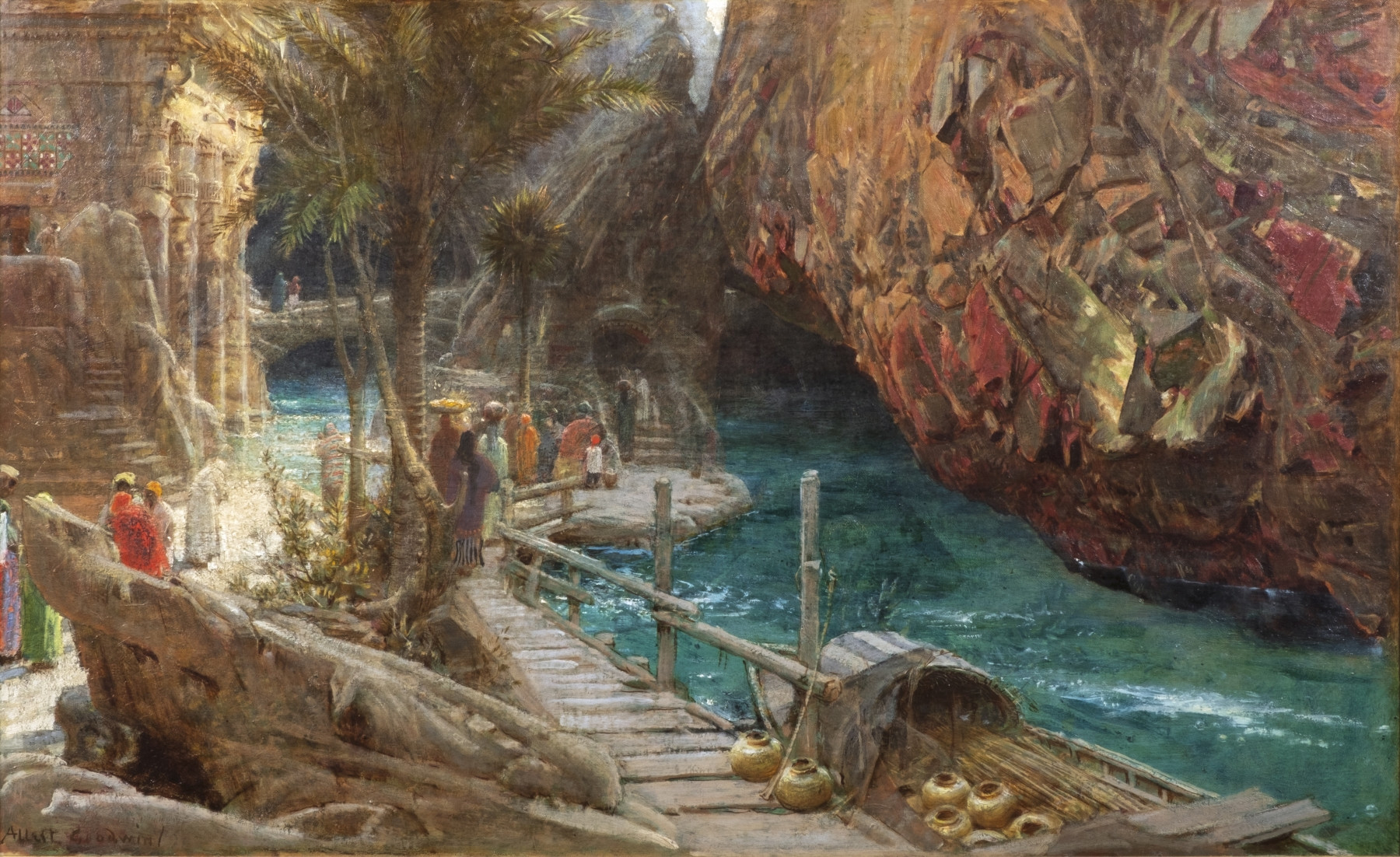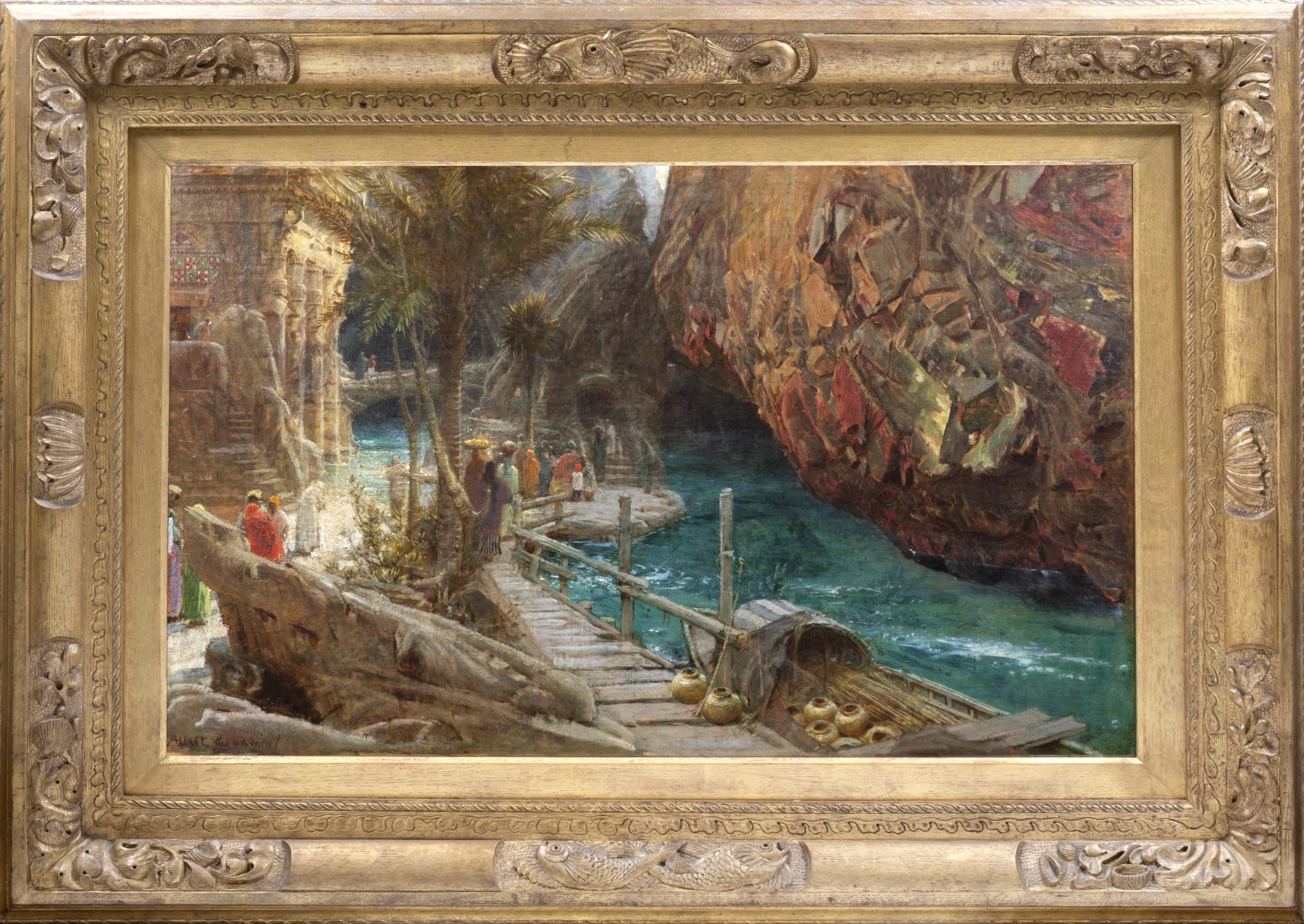

In original carved, gilded oak frame by Charles Goodwin.
The source of the River Ganges, which is regardedby the Hindu population of India as sacred, is at Lapthal, is in the Himalayas on the frontier between India and China.
The Athenaeum, 1900.
'Allegorical landscape, and still more allegorized landscape painting, is a difficult and particularly uncertain sort of art in which Mr Goodwin, its most accomplished practitioner amongst us, is one of the few who contrive even to approach success.
The Source of the Sacred River (463) is almost as suggestive, quite as well painted, and much more understandable. In general it does not differ from a score of similar works by Mr Goodwin, who is not content with painting nature so admirably that few rival him, and leaving to her sympathetic lovers the task of recognizing the pathos and poetry which, so to say, harmonizes itself with the spectator's mood. There is nothing to tell us that the stream Mr Goodwin depicted so rarely is sacred in any exceptional sense, but there is much we can be grateful for in its abundant and sumptuous harmonies of colour, form, and light, and the dignity of its masses.'
“No. 463, “The Source of the Sacred River”, by Mr. Albert Goodwin, is beautiful, impressive, and fanciful; it brings the Orient of the imagination very vividly before the eye.”
- St. James’s Gazette, 21 May 1900
“It was daring of Mr. Albert Goodwin to attempt to realise in paint the source of “The Sacred River” (No. 463), of which Coleridge wrote in his famous dream poem beginning:- In Xanadu did Kubla Khan A stately pleasure dome decree –
The name of “the sacred river”, it will be remembered, was “Alph”, and it must, I think, have occurred to many people, as it has to me, that seeing what the present associations of “Alf” are, it is much to be regretted that the poet did not choose for his mystic stream some name less suggestive of one of Arry’s pals on bank-holiday. But this, of course, has nothing to do with Mr. Goodwin’s picture, which I like better than his other oil painting in the Academy, “Dawn in the Pilgrim’s Road” (No. 575).
- Truth, 24 May 1900